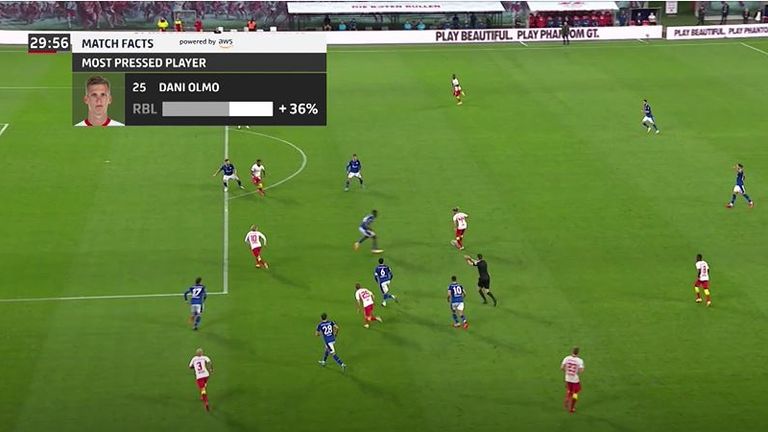Bundesliga Match Facts to quantify pressing, explains Bayer Leverkusen sporting director Simon Rolfes
Analysis within football clubs and the media has undergone a seismic shift in recent years. What began with assists, chances created and dribbling statistics has evolved into a mainstream discussion of expected goals. But analysis of pressing, such an important aspect of the game, had long been difficult to quantify, particularly for the wider public. Until now.
The Bundesliga has announced that a new metric calculating the extent of pressing in matches will be made accessible to all. One of three new Bundesliga Match Facts, powered by AWS, it will even measure the pressure on individual players, opening up new avenues of analysis and discussion that will bring a new level of depth to how viewers interact with the game.
Simon Rolfes knows the importance of pressing better than most. He was part of Roger Schmidt’s exciting Bayer Leverkusen side that twice finished in the top four of the Bundesliga during the middle part of the last decade, playing a brand of high-intensity football that saw them regarded as natural successors to Jurgen Klopp’s Borussia Dortmund.
“The pressing under Roger Schmidt was quite extreme in some situations,” Rolfes tells Sky Sports. “To create enough pressure on the player with the ball, we would attack him in such a quick pattern with so many players that the opposing team would have two or three players completely free on the opposite side of the pitch.”
There has always been closing down, of course. Defending from the front is not new. But there has been a fundamental shift in how the game is being played. Rolfes, whose Bundesliga career with Leverkusen spanned a full decade before taking on his current role there as sporting director, is not among those arguing that football is the same as in his day.
Trending
“Definitely,” he confirms, when asked if there has been a change.
“Players are getting better and better both technically and physically, and they are able to create dangerous situations more quickly and in much smaller spaces. To provoke mistakes, it is vital to reduce both the time and space they have with the ball at their feet.
“Also, defensive team organisation is constantly improving and progressing, so it has become more of a focus to win the ball further up the pitch by pressing opponents.
“This leaves opposing teams less time to get organized, and of course, the further up you win the ball, the quicker you can get in a goal-scoring position.”
- Get Sky Sports | Get a NOW TV Pass
- Live football on Sky Sports
Even while playing in a team so committed to this pressing philosophy, the statistical evidence of it was not necessarily available to Rolfes and others at the time.
“The data was relatively basic,” he explains. “Of course we had numbers on completed passes, ball possession quotas, this kind of stuff. But the actual insight gained from the available data was still pretty rudimentary. There was no real-time, there was no machine learning. This is all changing now and it is truly helpful for players and clubs.”
The new metric will rate the pressure on a player in possession, factoring in the number of defenders around them, their distance from the player with the ball and the direction of movement in relation to that player. If a certain threshold is reached, the machine learning algorithm will register it as a pressure situation. Crucially, this allows for real-time analysis.
https://youtube.com/watch?v=wbGXgc3m91U%3Ffeature%3Doembed
“Pressing is a huge part of the game,” says Rolfes. “But, in the past, even though the commentators might pick up on pressing patterns and try to make them accessible to the fans at home, it was hard for them to quantify it and back up it with facts.
“Now, fans can actually see where and on which players pressure is being exerted, based on measurements of the number of opposing players, their distance to the player in possession, as well as the direction of every players’ movement.
“Comparing the number of pressing situations a player is receiving with the average number of pressure situations faced by their team-mates, helps to determine which players are pressured the most. This can give additional insight into the game plan of a team.”
According to Rolfes, as Leverkusen’s sporting director he is “constantly on the lookout for stats and key performance indicators that help to improve” the team and their style of play.
But now there is greater transparency than ever before. It is not just the coaches and their bosses able to interrogate the data but the supporters too. These are exciting times.
“No other league is doing this,” he adds.
“Technology is becoming an important aspect of sport, both in terms of on the pitch performance and in relation to telling the story of it.
“We are still at the start of this journey.”
Source: Read Full Article

